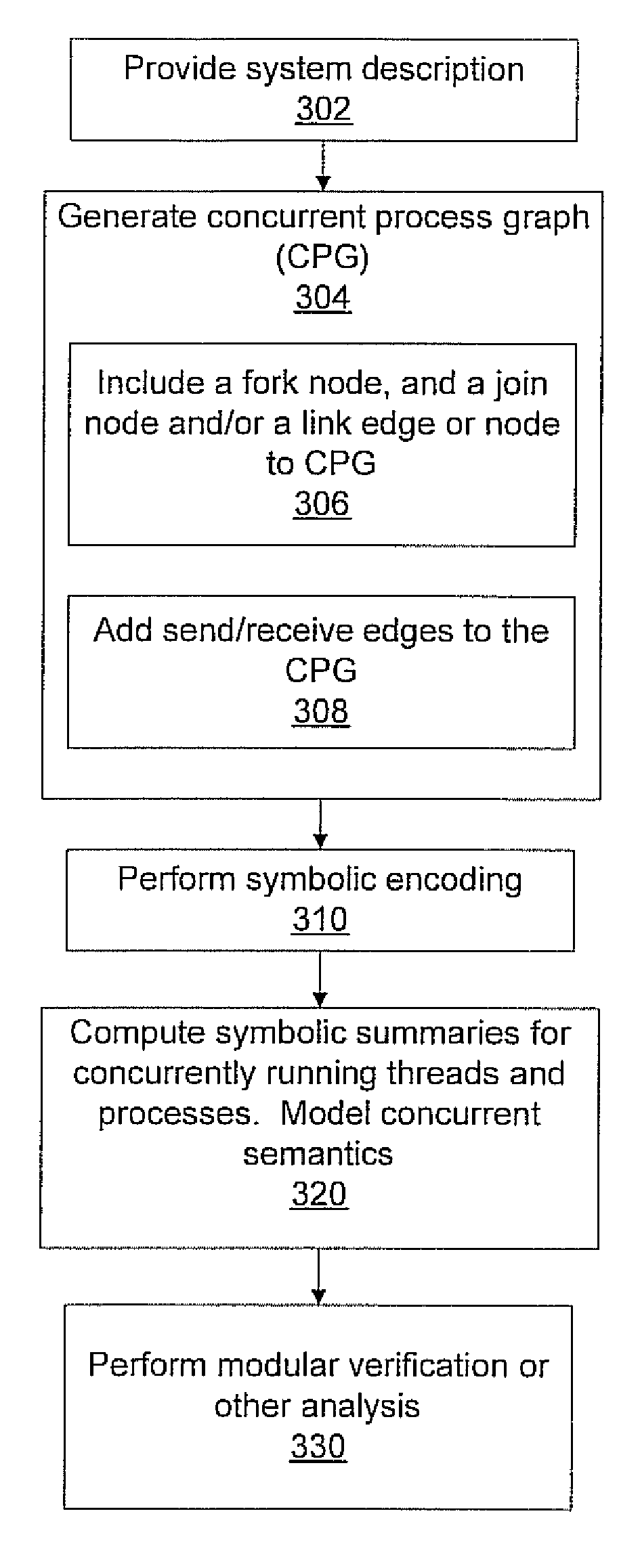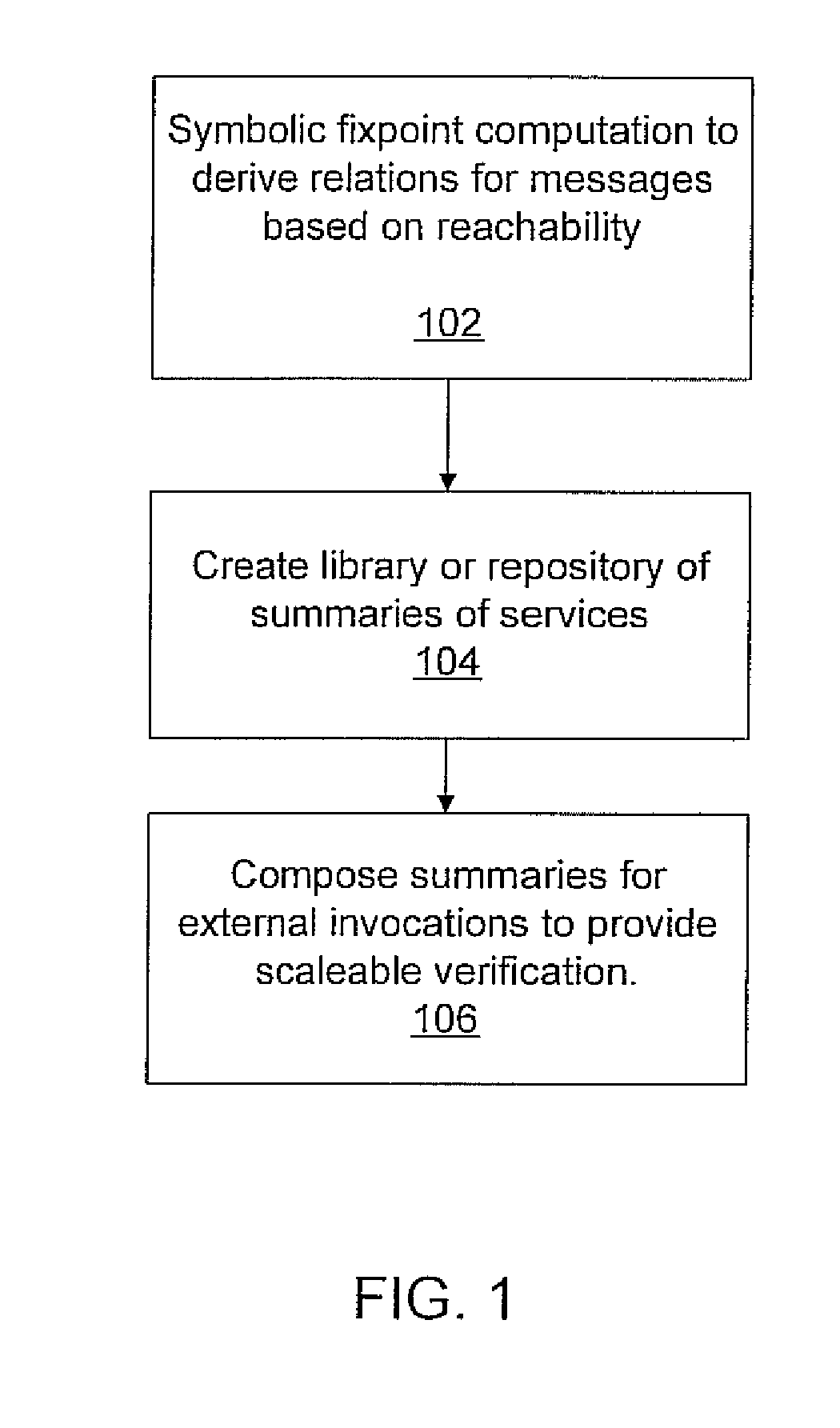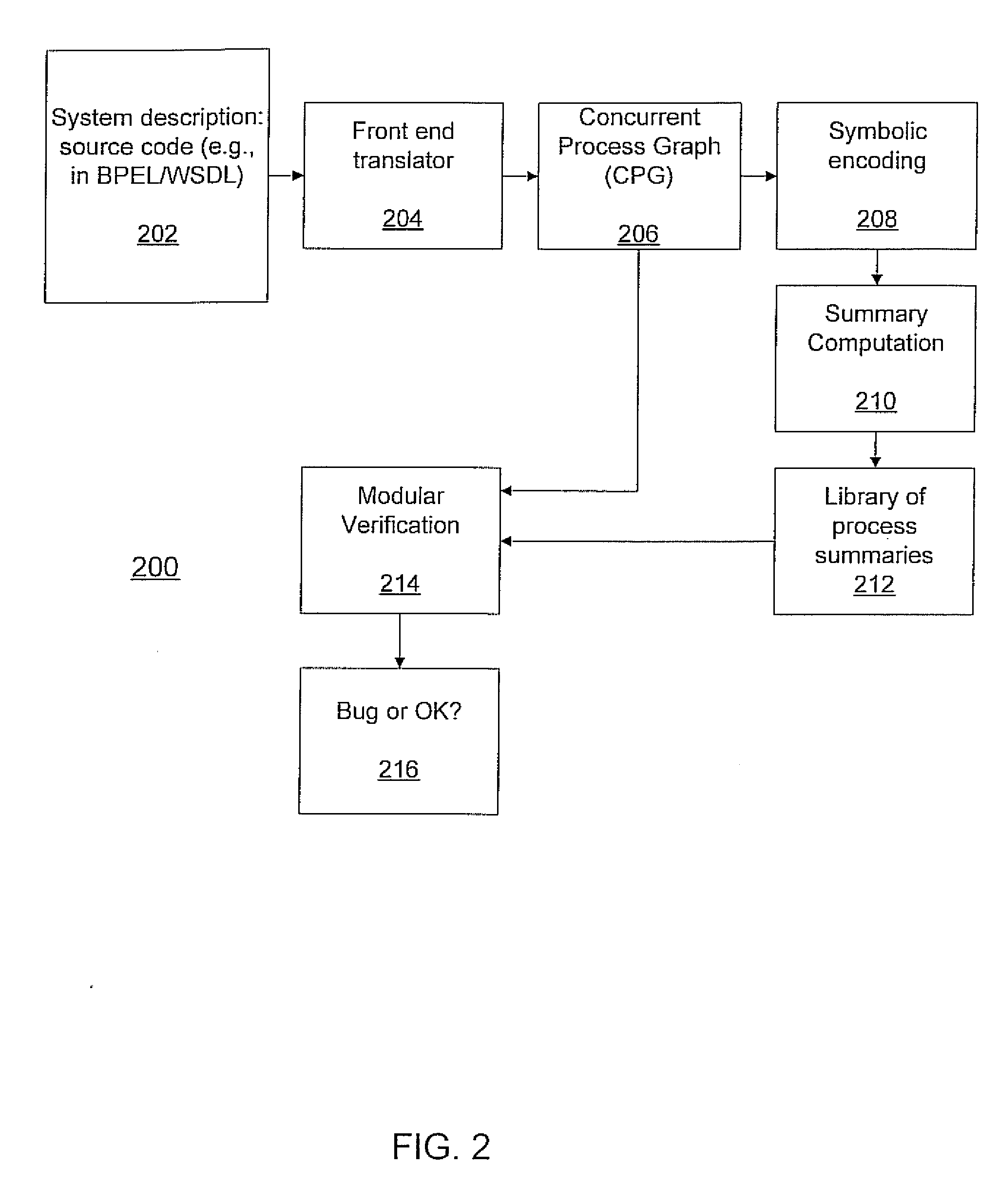Modular verification of web services using efficient symbolic encoding and summarization
a symbolic encoding and summarization technology, applied in the field of computer verification systems and methods, can solve problems such as scalability problems, difficult analysis and debugging of interfered concurrent executions, and inability to scale well to large systems, and achieve the effect of facilitating a simple definition of formal semantics
- Summary
- Abstract
- Description
- Claims
- Application Information
AI Technical Summary
Benefits of technology
Problems solved by technology
Method used
Image
Examples
example 1
[0133]There are two processes shown in FIG. 9, in which process PA invokes process PB. Node values are given in circles. The summary of PB on the right-hand side is
PN.pre=true,
PB.post=(msgi>0msg0=+1)
(msgi,>0msg0=0)
(msgi,>0msg0=−1)
[0134]After composing the summary of PB, the transition relation of process PA on the left-hand side is
n1 → n2: (sel=1)(pc1=pc1′2)(msgi′=x)
n2 → n3: (sel=1)(pc1=2pc1′=3)(x′=x−1msgi′=msgi)
n3 → n4: (sel=1)(pc1=3pc1′=4)(y′=msg0PB.post(msgi,msg0)).
[0135]Proof of Correctness: A state s is a mapping function: V → Dom, where Dom denotes the domain of the mapped variable. A variable vεV is constant in process P if (v′=v) holds in all transitions of the process. The following lemma shows that we can use the reachable states of a process as a summary, since it is a symbolic representation of the relation of incoming messages and outgoing messages. The lemma also shows that the summary is precise. The key is to separate from the set of state variables of the model, the...
PUM
 Login to View More
Login to View More Abstract
Description
Claims
Application Information
 Login to View More
Login to View More - R&D
- Intellectual Property
- Life Sciences
- Materials
- Tech Scout
- Unparalleled Data Quality
- Higher Quality Content
- 60% Fewer Hallucinations
Browse by: Latest US Patents, China's latest patents, Technical Efficacy Thesaurus, Application Domain, Technology Topic, Popular Technical Reports.
© 2025 PatSnap. All rights reserved.Legal|Privacy policy|Modern Slavery Act Transparency Statement|Sitemap|About US| Contact US: help@patsnap.com



